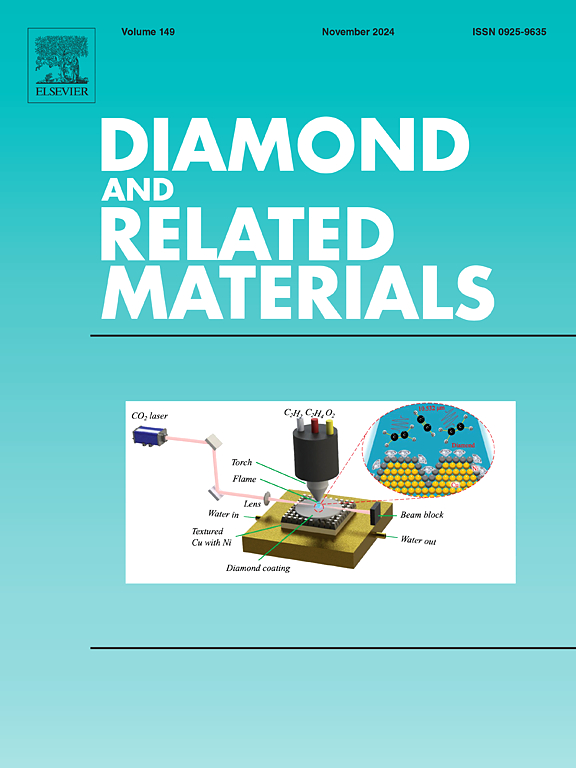Hydrogen storage performance of T-shaped graphene monolayer with Li modification: First-principles calculations
IF 4.3
3区 材料科学
Q2 MATERIALS SCIENCE, COATINGS & FILMS
引用次数: 0
Abstract
Buckled T-shaped graphene (BTG) and planar T-shaped graphene (PTG) were chosen to improve hydrogen storage efficiency. Theoretical calculations suggested the stability and reliability of the two configurations of T-shaped graphene (TG), as well as their potential for experimental fabrication. After introducing lithium (Li) atom decorations on the TG monolayer, their effectiveness in enhancing hydrogen storage capacity was verified. It was found that each Li atom on the BTG structure can adsorb up to three H molecules, whereas on the PTG structure, up to five H molecules can be adsorbed per Li atom. The average adsorption energies were calculated to be and eV/H for BTG and PTG, respectively. When considering the maximum Li decoration on both upper and lower surfaces of TG, the resulting hydrogen storage capacities reach 8.8 wt%. Furthermore, the critical temperature of hydrogen was found to be significantly lower than the desorption temperature (), further emphasizing the promise of TG–Li monolayers as alternative materials for hydrogen storage.
Li修饰的t形石墨烯单层储氢性能:第一性原理计算
为了提高储氢效率,选择了屈曲t形石墨烯(BTG)和平面t形石墨烯(PTG)。理论计算表明了t型石墨烯(TG)的两种结构的稳定性和可靠性,以及它们在实验制造中的潜力。在TG单层上引入锂原子修饰后,验证了其提高储氢能力的有效性。结果表明,BTG结构中每个Li原子最多可吸附3个h2分子,PTG结构中每个Li原子最多可吸附5个h2分子。BTG和PTG的平均吸附能分别为- 0.15和- 0.17 eV/H 2。当考虑TG上下表面的最大Li装饰时,得到的储氢容量达到8.8%。此外,发现氢的临界温度显著低于解吸温度(TD),进一步强调了TG-Li单层作为储氢替代材料的前景。
本文章由计算机程序翻译,如有差异,请以英文原文为准。
求助全文
约1分钟内获得全文
求助全文
来源期刊

Diamond and Related Materials
工程技术-材料科学:综合
CiteScore
6.00
自引率
14.60%
发文量
702
审稿时长
2.1 months
期刊介绍:
DRM is a leading international journal that publishes new fundamental and applied research on all forms of diamond, the integration of diamond with other advanced materials and development of technologies exploiting diamond. The synthesis, characterization and processing of single crystal diamond, polycrystalline films, nanodiamond powders and heterostructures with other advanced materials are encouraged topics for technical and review articles. In addition to diamond, the journal publishes manuscripts on the synthesis, characterization and application of other related materials including diamond-like carbons, carbon nanotubes, graphene, and boron and carbon nitrides. Articles are sought on the chemical functionalization of diamond and related materials as well as their use in electrochemistry, energy storage and conversion, chemical and biological sensing, imaging, thermal management, photonic and quantum applications, electron emission and electronic devices.
The International Conference on Diamond and Carbon Materials has evolved into the largest and most well attended forum in the field of diamond, providing a forum to showcase the latest results in the science and technology of diamond and other carbon materials such as carbon nanotubes, graphene, and diamond-like carbon. Run annually in association with Diamond and Related Materials the conference provides junior and established researchers the opportunity to exchange the latest results ranging from fundamental physical and chemical concepts to applied research focusing on the next generation carbon-based devices.
 求助内容:
求助内容: 应助结果提醒方式:
应助结果提醒方式:


